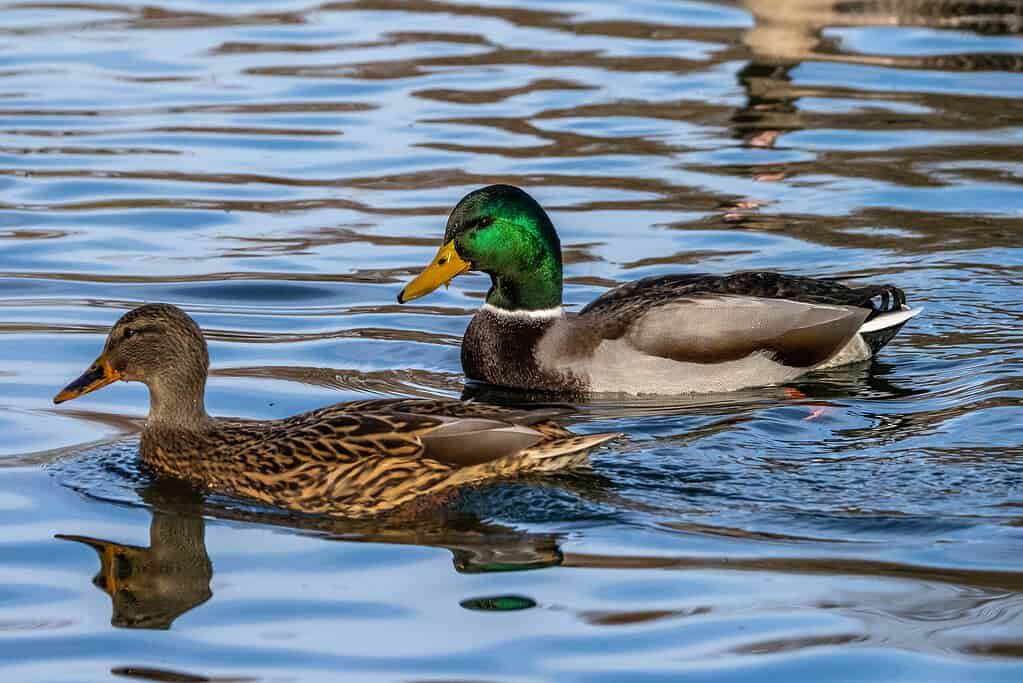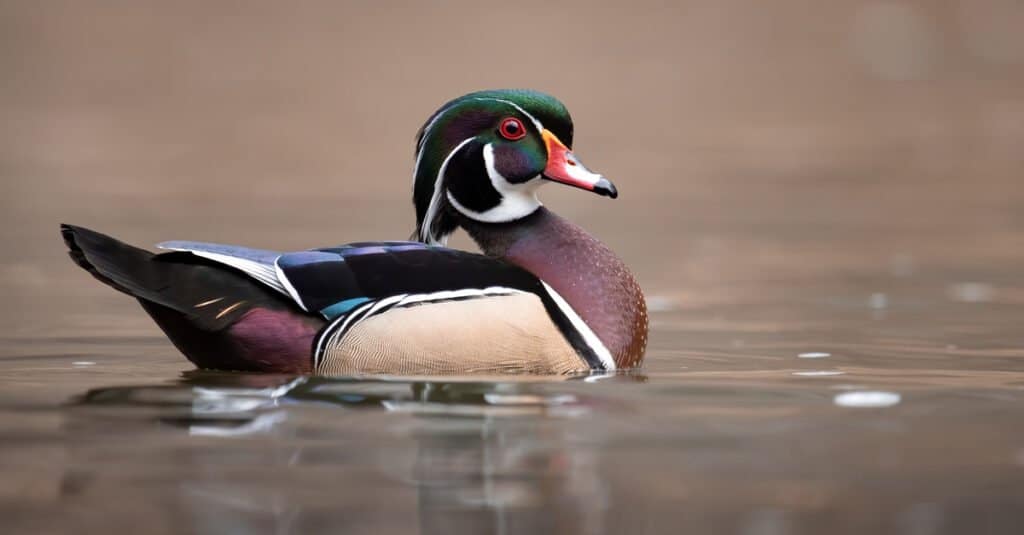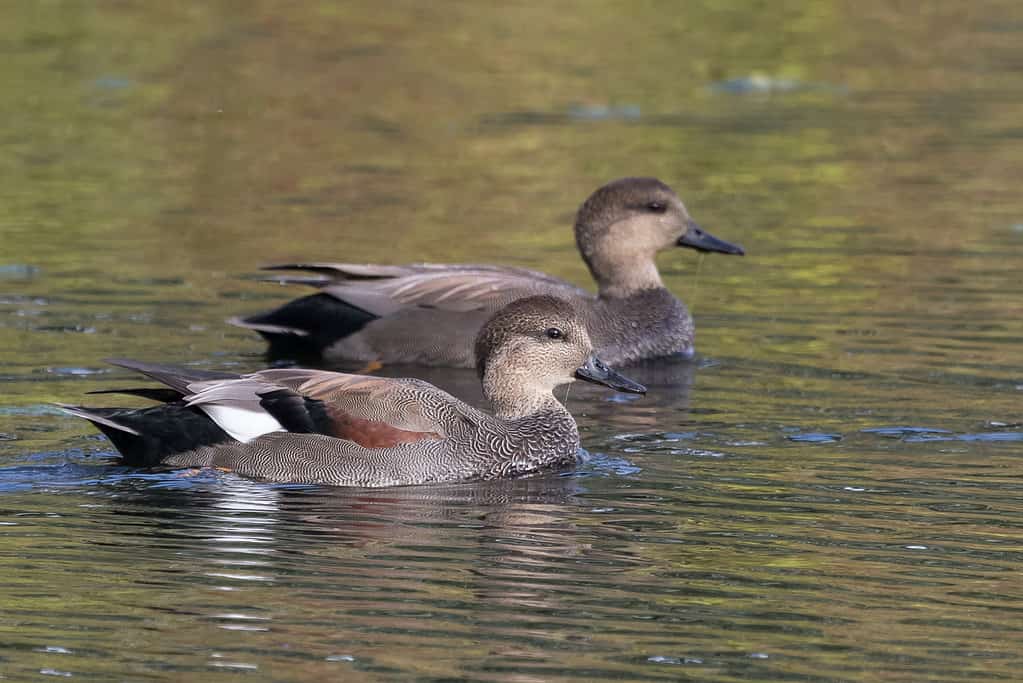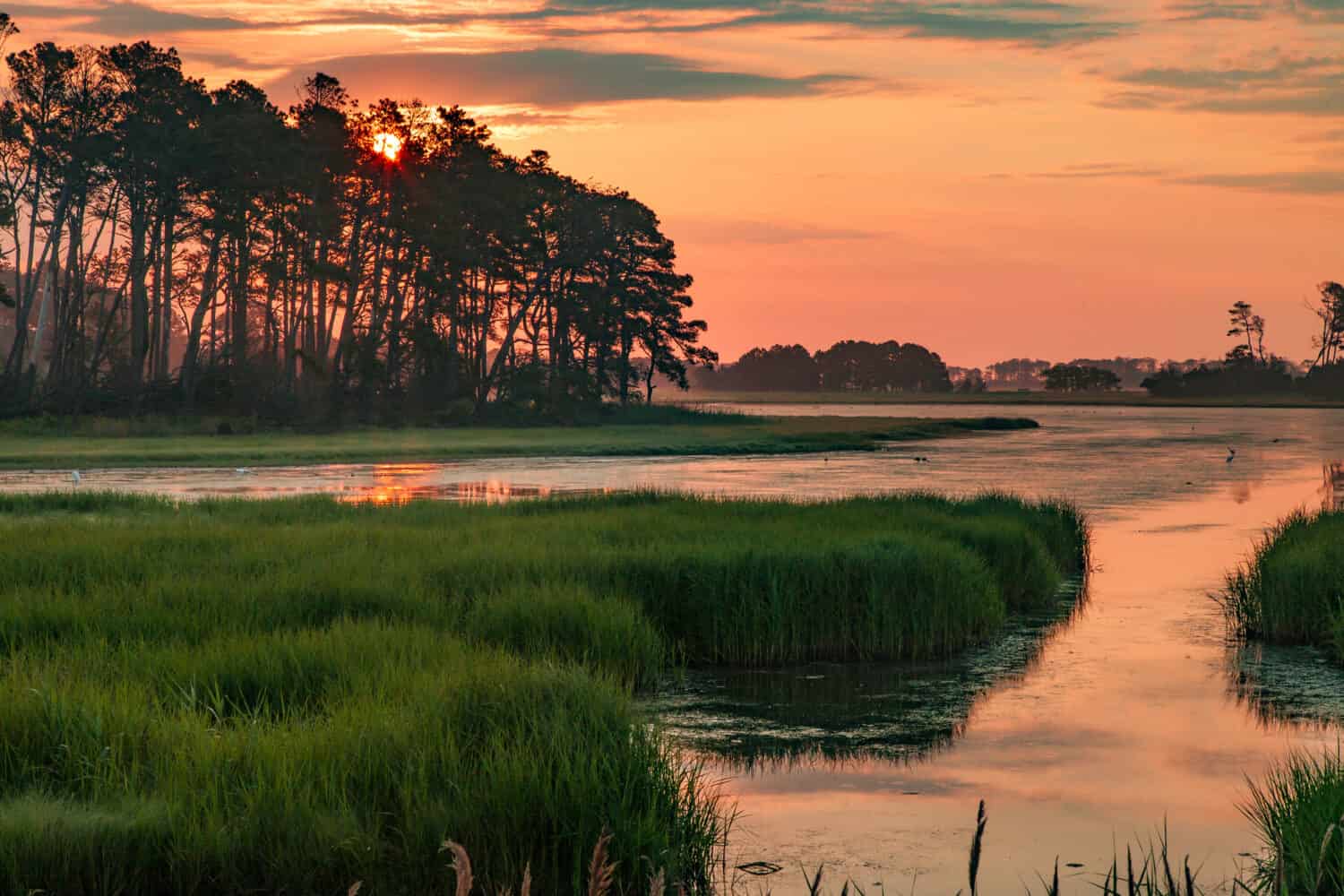Are you ready for duck hunting season in Virginia? The feel of the crisp air on your skin, the sound of leaves crunching under your boots, and the sight of ducks flying overhead — there’s nothing quite like it! But when can you go duck hunting in Virginia? We’ve got season dates, bag limits, and a whole lot more for you so you can be ready to go!
What Types of Ducks Can Be Found in Virginia?
Its all about that Duck, right? Would you believe me if I told you that there were at least 20 different species of ducks found living throughout the four seasons in Virginia? Of course, they are found at different times through out the year. However, any way you look at it, that sure is a lot of ducks in a row!
Ducks are very easy to recognize with their webbed feet and unique “quacking” like sound. Here are some of the many duck species you can find in Virginia:
- American black duck
- Mallard
- Wood duck
- Gadwall
- Eurasian wigeon
- Green winged teal
- Blue winged teal
- Northern pintail
- Northern shoveler
- American wigeon
- Canvasback
- Redhead
- Ring necked duck
- Greater scaup
- Lesser scaup
- Ruddy duck
- Long tailed duck
- Bufflehead
- Hooded merganser
- Common merganser
- Red breasted merganser
- Pied billed grebe
- Horned grebe
- Double crested cormorant
- American coot
- Plovers
- Common eider
- Mottled duck
Here are a few tips to help you identify and find which species of duck you’re looking for during duck hunting season in Virginia. Utilizing these following identification methods will aid you in gaining a better understanding of the beautiful Virginian duck wildlife. Plus, it’s important to know which type of duck you are hunting, since the bag limits and possession limits differ between species!

Male mallard ducks are easy to identify due to their emerald green heads.
©iStock.com/Rudolf Ernst
What Time of Year Is It?
As winter approaches, more wood ducks and mallards arrive in Virginia from up north. Some ducks migrate from Canada (and even from other northern states) to Virginia. Other ducks are year-round residents of the great state. However, knowing the time of year a particular species of duck can be found will increase your chances of identifying them correctly.
Habitat and Environment
Knowing the habitat of the different types of ducks can help you identify them as well. For example, wood ducks can often be found near wooded wetlands, swamps, or open water, while mallards prefer fresh water whenever available. Mallards can be found in many types of habitats, from grain fields to lakes, rivers, city parks, bays, marshes, and wooded swamps. Being familiar with the environments that ducks are most likely to inhabit can help you quickly identify which species is present during duck hunting season in Virginia.
The Full Duck Attire
And last, the physical characteristics of a duck, such as their size, coloring, and call (the sound it makes). Wood ducks for example, have distinct crests on their heads and colorful plumage, while mallards have iridescent green feathers and yellow bills.
Additionally, one can pay attention to the size of a particular duck as well. For example, wood ducks are usually around 18 inches long, while mallards are between 20 and 26 inches long. Noticing subtle differences in size can help you determine which species you have spotted.
Finally, listening for specific calls can also aid in identifying the type of duck. Wood ducks, for example, are known for their high pitched whistle sounds. On the other hand, mallards usually have a low quacking sound. There are obviously numerous duck calls, noises, and sounds one could learn to hear and identify. But, paying close attention to the calls that each species makes will help you differentiate between them. And by considering all of these various aspects — such as the color, size, call, habitat, etc. — many-a-duck-hunters have become successful in effectively identifying different species of ducks.

Although wood ducks also have green feathers on their heads, they have many other identifying characteristics that distinguishes them from mallards.
©Harry Collins Photography/Shutterstock.com
Where Can You Hunt Ducks in Virginia?
If you are duck hunting in Virginia, you must stay at least 750 yards away from any wildlife sanctuary. In addition, there are a number of areas where duck hunting is prohibited (check the DWR’s list here).
Duck Hunting Season Dates in Virginia (July 2022-June 2023)
- October 7-10 (Black duck closed)
- November 16-27
- December 17-January 29
- October 22 and February 4 — Youth and Veterans Waterfowl Hunting Days
Virginia Daily Bag Limits and Possession Limits
The Daily Bag Limit is six ducks of any species. However, there are several additional restrictions for various species:
- Can include no more than two mallards (only one hen mallard)
- Three wood ducks
- Two black ducks (except closed Oct. 7-10)
- Scaup: one per day for 40 days (October 7-10, November 16-27, December 17-January 9), and two per day for 20 days (January 10-29)
- Two redheads
- Two canvasback
- One pintail
- One mottled duck
- One fulvous whistling duck
- Four total sea ducks (no more than three scoters, three eiders [only one hen], three long-tailed ducks)
- Closed season on harlequin ducks
The possession limit is three times the daily bag limit. No person may take more than one daily bag limit in any one day. In addition, you can never have more than one daily bag limit of birds on you while out hunting.
You have to use non-toxic shot that is approved by the Virginia Department of Wildlife Resources. You can’t use lead shot, and you can’t have it in your possession at all while you are out hunting.
Shooting Hours
According to the Virginia Department of Wildlife Resources, shooting hours for ducks in Virginia are from one half-hour before sunrise until sunset daily.
However, it’s important to note that to hunt waterfowl in Virginia, you need to get registered with the Virginia Harvest Information Program (HIP). This applies to all hunters, whether they have a license or not. And you need to register with them every year starting on July 1, so be sure to mark it on your calendar!
Meet Four of the Most Common Species of Duck in Virginia
- Mallard: The mallard is undoubtedly one of the most prevalent ducks in the American waterfowl scene and it is hunted extensively across the state of Virginia. From a professional duck hunter’s perspective, the male mallard is a sight to behold, with its shimmering head of emerald green that glows in the midday sun. When male mallards take flight, you can see their majestic wings adorned with striking blue edges, as well as brown to gray colored backs and white bellies.
- Gadwall: While not as flashy as mallards or wood ducks, the species boasts earthy tones with a mix of brown hues. Their wings featured stark black and white plumage. What sets these ducks apart is the unique characteristic of both sexes appearing virtually indistinguishable. Both drakes and hens have brown heads and black beaks.
- Wood Duck: Wood Ducks are found all year in Virginia. Male Wood Ducks have beautiful green heads with a striking crest at the back, black and white markings, and red eyes.
- Bufflehead: Bufflehead ducks are most common in freshwater lakes and ponds, as well as coastal waters. They often hang out in tree cavities during the winter, which is also where they lay their eggs and raise their young. Buffleheads have large heads and black, grey and white feathers. Males have a large patch of white on the back of the head, with a little bit of green and purple iridescent feathers near the eyes. Female buffleheads have a small patch of white on their cheeks.

It is extremely difficult to distinguish between
male and female
gadwall ducks.
©Hayley Crews/Shutterstock.com
Thank you for reading! Have some feedback for us? Contact the AZ Animals editorial team.








